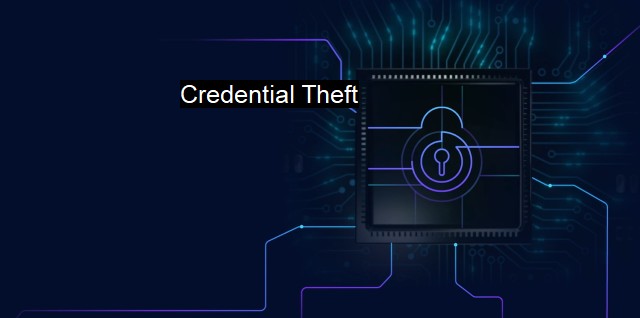What is Credential Theft?
Preventing Credential Theft: The Importance of Antivirus Modules and Collaboration in Cybersecurity
Credential theft is a critical challenge in the domains of cybersecurity and antivirus efforts. It is a technique used by cybercriminals to steal the access details (credentials) of users. Credentials consist of usernames, passwords, PIN numbers, or any other form of data that certifies the identity of a user. Once this vital information falls into the wrong hands, the perpetrators can access digital platforms, execute unauthorized transactions, alter system configurations, and even manipulate sensitive data to their advantage.Cybercriminals use a range of sophisticated methods for credential theft. These span from traditional tactics like phishing, where an unsuspecting victim is tricked into giving up their login details, to modern methods such as malicious software or hardware, that covertly extract credentials from targeted systems. In each case, the cybercriminal's objective is to compromise the system undetected.
An additional variation of credential theft is known as pass-the-hash attacks. This ingenious technique involves stealing hashed passwords, a type of password that has been mathematically transformed to enhance security. Unfortunately, cybercriminals can use these hash values to bypass the need for an actual password, thereby gaining unauthorized access to sensitive content.
While technology has facilitated these kinds of credential theft, it ironically also provides the solution to combating them. One potent method for neutralizing credential theft is by implementing multi-factor authentication (MFA). Cybersecurity experts recommend MFA as it forces the users to establish their identity through multiple levels of evidence. For instance, besides inputting passwords, users might also need

Credential Theft FAQs
What is credential theft in the context of cybersecurity?
Credential theft refers to the act of stealing login credentials or passwords of a user, typically through hacking, phishing or social engineering attacks. Cybercriminals can use these stolen credentials for their personal gain, such as accessing sensitive data or financial information.What are the different types of credential theft attacks?
There are several types of credential theft attacks, including phishing, keylogging, brute-force attacks, and man-in-the-middle attacks. Phishing is the most common type of attack, where attackers send fake emails or messages that appear to be from a legitimate source to trick users into providing their credentials. Keylogging is a technique where attackers infect a user's device with malware that captures every keystroke, including login credentials. Brute-force attacks involve using automated tools to repeatedly guess a user's password. Man-in-the-middle attacks are where attackers intercept communication between two parties and steal login credentials.Why is credential theft considered a significant threat to cybersecurity?
Credential theft is considered a significant threat because it can lead to various consequences, including identity theft, financial loss, reputation damage, and data breaches. Cybercriminals can use stolen credentials to gain access to valuable and sensitive data, which can be used for malicious purposes such as digital espionage, financial fraud, and ransomware attacks. Moreover, credential theft is hard to detect, and it can take a long time for victims to realize that their credentials have been stolen.What preventive measures can individuals take to protect themselves from credential theft attacks?
Individuals can take several preventive measures to safeguard themselves from credential theft attacks, such as using strong passwords, enabling two-factor authentication, avoiding public Wi-Fi networks, keeping software up to date, and being cautious of suspicious emails and messages. It is also recommended to use antivirus software that can detect and prevent phishing attacks and malware infections. Additionally, users should regularly monitor their accounts for any unauthorized activity and change their passwords frequently.| | A | | | B | | | C | | | D | | | E | | | F | | | G | | | H | | | I | | | J | | | K | | | L | | | M | |
| | N | | | O | | | P | | | Q | | | R | | | S | | | T | | | U | | | V | | | W | | | X | | | Y | | | Z | |
| | 1 | | | 2 | | | 3 | | | 4 | | | 7 | | | 8 | | |||||||